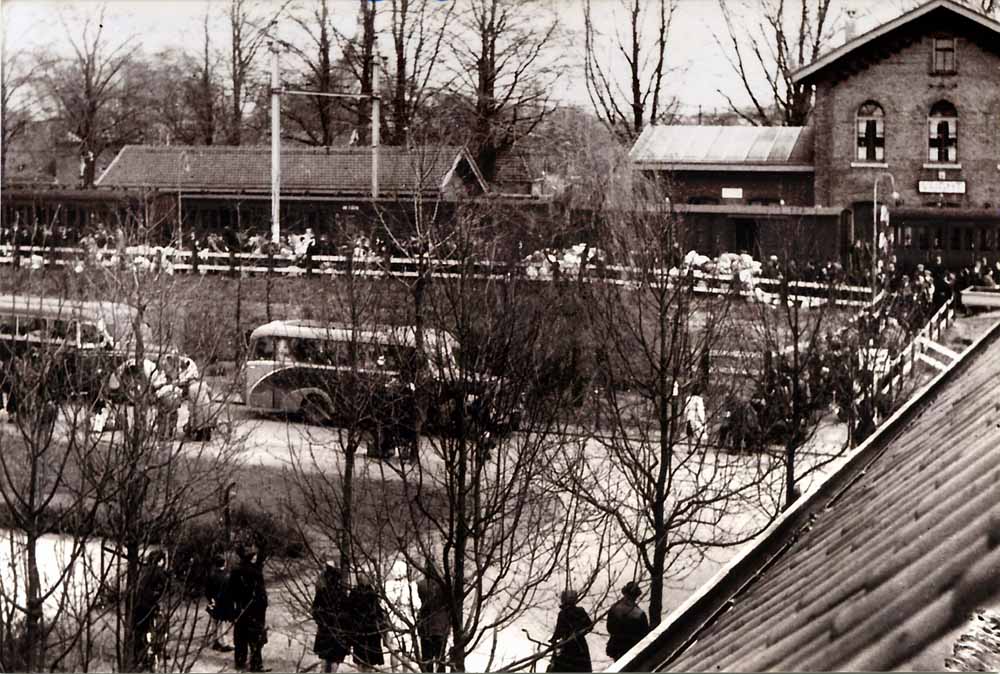Kamp Vught – Concentratiekamp
Kamp Vught was a concentration camp located in the Netherlands, near the city of ‘s-Hertogenbosch. The camp was built during the Second World War by the Nazis and was used to imprison Jews, political prisoners, and other groups that were considered “undesirable” by the Nazi regime. In this article, we will explore the history of Kamp Vught and the atrocities that took place there.
History of Kamp Vught
Kamp Vught was built in 1942 on the site of a former military barracks. The camp was originally intended to be a transit camp for Jews who were being deported to other concentration camps. However, it soon became a permanent camp and was used to imprison a variety of groups, including political prisoners, resistance fighters, and Roma people.
Conditions in Kamp Vught were harsh, with prisoners forced to live in overcrowded and unsanitary conditions. Food was scarce, and prisoners were often subjected to physical and psychological abuse by the guards.
In 1944, the Allies began to advance towards the Netherlands, and the Nazis decided to evacuate Kamp Vught. The prisoners were forced to march to other concentration camps in Germany, and many died during the journey or were killed by the guards.
The Atrocities of Kamp Vught
The atrocities that took place in Kamp Vught are numerous and shocking. Many prisoners were subjected to medical experiments, including sterilization, radiation exposure, and injections with dangerous substances.
Resistance fighters were often subjected to torture and execution, with some being hung in public as a warning to others. Jews were also targeted for extermination, with many being sent to other concentration camps to be killed in gas chambers.
One of the most notorious incidents in Kamp Vught’s history is the “Children’s Block.” This was a special section of the camp where children were imprisoned. Many of these children were orphaned or had been separated from their parents and were forced to live in terrible conditions. Some were subjected to medical experiments, and many died of disease or malnutrition.
The Liberation of Kamp Vught
Kamp Vught was liberated by Allied forces on October 27, 1944. The camp was in a state of chaos, with many prisoners dying of disease or starvation. The Allies provided medical assistance and food to the survivors, but many were too weak to recover.
After the war, the camp was used as a prison for collaborators and war criminals. In 1951, the camp was demolished, and a memorial was erected to commemorate the victims.
Conclusion
The history of Kamp Vught is a tragic reminder of the horrors of the Holocaust and the cruelty of the Nazi regime. The atrocities that took place in this camp are a stain on human history, and it is important to remember them so that we can prevent such atrocities from happening again.
FAQs
1. What was the purpose of Kamp Vught?
Kamp Vught was a concentration camp built by the Nazis during the Second World War. It was used to imprison Jews, political prisoners, and other groups that were considered “undesirable” by the Nazi regime.
2. What were the conditions like in Kamp Vught?
Conditions in Kamp Vught were harsh, with prisoners forced to live in overcrowded and unsanitary conditions. Food was scarce, and prisoners were often subjected to physical and psychological abuse by the guards.
3. What happened to the prisoners in Kamp Vught?
Many prisoners in Kamp Vught were subjected to medical experiments, torture, and execution. Jews were targeted for extermination, with many being sent to other concentration camps to be killed in gas chambers.
4. How was Kamp Vught liberated?
Kamp Vught was liberated by Allied forces on October 27, 1944. The camp was in a state of chaos, with many prisoners dying of disease or starvation. The Allies provided medical assistance and food to the survivors.
5. What happened to Kamp Vught after the war?
After the war, the camp was used as a prison for collaborators and war criminals. In 1951, the camp was demolished, and a memorial was erected to commemorate the victims.
